Posted on April 4th, 2010 by Jaimie Schock
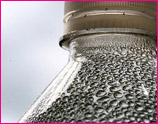 This activity for grades 6-8 provides students with the opportunity to create a food package for a specific food. The students have three components to focus on in the design of their food package. The package will have to keep the food clean, protect or aid in the physical and chemical changes that can take place in the food, and identify the food appealingly.
This activity for grades 6-8 provides students with the opportunity to create a food package for a specific food. The students have three components to focus on in the design of their food package. The package will have to keep the food clean, protect or aid in the physical and chemical changes that can take place in the food, and identify the food appealingly.
Read More
Filed under: Class Activities, Grades 6-8, Grades 6-8, Lesson Plans | 2 Comments »
Tags: Class Activities, Curriculum, Packaging Engineering
Posted on March 29th, 2010 by Jaimie Schock
 The Learning Roomba educational toolkit attempts to address robotics usability issues by keeping total costs down while making the tools as easy to use as possible. This toolkit is a collection of resources and tools to facilitate teaching robotics to pre-college students. Through these resources, students can learn about science, math, and engineering topics in a fun and exciting way.
The Learning Roomba educational toolkit attempts to address robotics usability issues by keeping total costs down while making the tools as easy to use as possible. This toolkit is a collection of resources and tools to facilitate teaching robotics to pre-college students. Through these resources, students can learn about science, math, and engineering topics in a fun and exciting way.
Read More
Filed under: Class Activities, Grades 6-8, Grades 6-8, Grades 9-12, Grades 9-12, Lesson Plans | Comments Off on Curriculum: Learning Roomba
Tags: Building robots, Class Activities, Curriculum, Lesson Plan, Robotics, Technology for Learning
Posted on March 29th, 2010 by Jaimie Schock
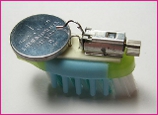 BristleBots are one variety of the popular vibrobot, a simple category of robot controlled by a single vibrating motor. This BristleBot is made from a toothbrush and a few low-cost materials and can easily be modified for additional challenge.
BristleBots are one variety of the popular vibrobot, a simple category of robot controlled by a single vibrating motor. This BristleBot is made from a toothbrush and a few low-cost materials and can easily be modified for additional challenge.
Read More
Filed under: Class Activities, Grades 6-8, Grades 9-12, Grades K-5 | 1 Comment »
Tags: Building robots, Class Activities, DIY, Lesson Plan, Robotics
Posted on March 22nd, 2010 by Jaimie Schock
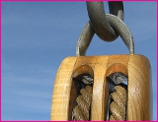 In this activity for grades 6-8, students gain first-hand experience with the mechanical advantage of pulleys. Students are given the challenge of helping save a whale by moving it from an aquarium back to its natural habitat into the ocean. They set up different pulley systems, compare the theoretical and actual mechanical advantage of each and discuss their recommendations as a class.
In this activity for grades 6-8, students gain first-hand experience with the mechanical advantage of pulleys. Students are given the challenge of helping save a whale by moving it from an aquarium back to its natural habitat into the ocean. They set up different pulley systems, compare the theoretical and actual mechanical advantage of each and discuss their recommendations as a class.
Read More
Filed under: Class Activities, Grades 6-8, Grades 6-8, Lesson Plans | Comments Off on Lesson: Lift and Pull
Tags: Class Activities, Lesson Plan, Mechanical engineering, Physical Science, Physics, Science Lesson Plans
Posted on March 22nd, 2010 by Jaimie Schock
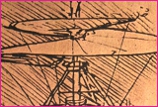 Across three or more class periods, students in grades 4-8 combine their own ideas with the elements of machines to imagine and design inventions to solve specific challenges. Using a variety of materials, they can create small working models of their inventions to test and improve them.
Across three or more class periods, students in grades 4-8 combine their own ideas with the elements of machines to imagine and design inventions to solve specific challenges. Using a variety of materials, they can create small working models of their inventions to test and improve them.
Read More
Filed under: Class Activities, Grades 6-8, Grades K-5 | Comments Off on Activity: Be Inventive!
Tags: Class Activities, Da Vinci, Grades 4 and 5, Grades 6-8
Posted on March 15th, 2010 by ASEE
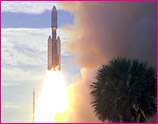 In this simple, exciting demonstration of Newton’s Laws of Motion, students in grades 5-8 construct a rocket powered by the pressure generated from an effervescing antacid tablet reacting with water. They undertake the work of aerospace engineers in exploring design elements that can affect a spacecraft’s performance.
In this simple, exciting demonstration of Newton’s Laws of Motion, students in grades 5-8 construct a rocket powered by the pressure generated from an effervescing antacid tablet reacting with water. They undertake the work of aerospace engineers in exploring design elements that can affect a spacecraft’s performance.
Read More
Filed under: Class Activities, Grades 6-8, Grades K-5 | 3 Comments »
Tags: Aerospace, grades 5-8, NASA, Newton's Laws
Posted on March 15th, 2010 by ASEE
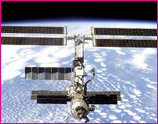 In this activity, middle school students use tracking software available on the Internet to monitor a very large satellite, the International Space Station. Using information from this online resource, students predict and graph the motion of the space station at their location and create a 3-D display of its path through the sky.
In this activity, middle school students use tracking software available on the Internet to monitor a very large satellite, the International Space Station. Using information from this online resource, students predict and graph the motion of the space station at their location and create a 3-D display of its path through the sky.
Read More
Filed under: Class Activities, Grades 6-8 | Comments Off on Class Activity: Satellite Tracker
Tags: Aerospace, Aerospace Engineering, International Space Station, Satellites
Posted on March 8th, 2010 by ASEE
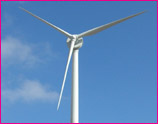 This lesson plan from PBS helps students discover the basics of wind power technology in having them build and refine a wind turbine. Students examine the concept of renewable energy, identify the benefits and drawbacks of wind power, and compare its costs and impact on the environment with other energy sources.
This lesson plan from PBS helps students discover the basics of wind power technology in having them build and refine a wind turbine. Students examine the concept of renewable energy, identify the benefits and drawbacks of wind power, and compare its costs and impact on the environment with other energy sources.
Read More
Filed under: Class Activities, Grades 9-12, Grades 9-12, Lesson Plans | 2 Comments »
Tags: Mechanical engineering, Wind Technology, Wind Turbine
Posted on March 1st, 2010 by ASEE
 Students grades 5-12 assume the role of civil engineers in constructing a model suspension bridge. They learn about other types of spans — including arch, girder, truss, and cantilever — and of the careful balance of compression and tension required in bridge building.
Students grades 5-12 assume the role of civil engineers in constructing a model suspension bridge. They learn about other types of spans — including arch, girder, truss, and cantilever — and of the careful balance of compression and tension required in bridge building.
Read More
Filed under: Class Activities, Grades 6-8, Grades 6-8, Grades 9-12, Grades 9-12, Lesson Plans | 2 Comments »
Tags: Bridge building, Bridge Design, Civil Engineering, Grades 5-12
 This activity for grades 6-8 provides students with the opportunity to create a food package for a specific food. The students have three components to focus on in the design of their food package. The package will have to keep the food clean, protect or aid in the physical and chemical changes that can take place in the food, and identify the food appealingly.
This activity for grades 6-8 provides students with the opportunity to create a food package for a specific food. The students have three components to focus on in the design of their food package. The package will have to keep the food clean, protect or aid in the physical and chemical changes that can take place in the food, and identify the food appealingly.








 The Learning Roomba educational toolkit attempts to address robotics usability issues by keeping total costs down while making the tools as easy to use as possible. This toolkit is a collection of resources and tools to facilitate teaching robotics to pre-college students. Through these resources, students can learn about science, math, and engineering topics in a fun and exciting way.
The Learning Roomba educational toolkit attempts to address robotics usability issues by keeping total costs down while making the tools as easy to use as possible. This toolkit is a collection of resources and tools to facilitate teaching robotics to pre-college students. Through these resources, students can learn about science, math, and engineering topics in a fun and exciting way. BristleBots are one variety of the popular vibrobot, a simple category of robot controlled by a single vibrating motor. This BristleBot is made from a toothbrush and a few low-cost materials and can easily be modified for additional challenge.
BristleBots are one variety of the popular vibrobot, a simple category of robot controlled by a single vibrating motor. This BristleBot is made from a toothbrush and a few low-cost materials and can easily be modified for additional challenge. In this activity for grades 6-8, students gain first-hand experience with the mechanical advantage of pulleys. Students are given the challenge of helping save a whale by moving it from an aquarium back to its natural habitat into the ocean. They set up different pulley systems, compare the theoretical and actual mechanical advantage of each and discuss their recommendations as a class.
In this activity for grades 6-8, students gain first-hand experience with the mechanical advantage of pulleys. Students are given the challenge of helping save a whale by moving it from an aquarium back to its natural habitat into the ocean. They set up different pulley systems, compare the theoretical and actual mechanical advantage of each and discuss their recommendations as a class. Across three or more class periods, students in grades 4-8 combine their own ideas with the elements of machines to imagine and design inventions to solve specific challenges. Using a variety of materials, they can create small working models of their inventions to test and improve them.
Across three or more class periods, students in grades 4-8 combine their own ideas with the elements of machines to imagine and design inventions to solve specific challenges. Using a variety of materials, they can create small working models of their inventions to test and improve them. In this simple, exciting demonstration of Newton’s Laws of Motion, students in grades 5-8 construct a rocket powered by the pressure generated from an effervescing antacid tablet reacting with water. They undertake the work of aerospace engineers in exploring design elements that can affect a spacecraft’s performance.
In this simple, exciting demonstration of Newton’s Laws of Motion, students in grades 5-8 construct a rocket powered by the pressure generated from an effervescing antacid tablet reacting with water. They undertake the work of aerospace engineers in exploring design elements that can affect a spacecraft’s performance. In this activity, middle school students use tracking software available on the Internet to monitor a very large satellite, the International Space Station. Using information from this online resource, students predict and graph the motion of the space station at their location and create a 3-D display of its path through the sky.
In this activity, middle school students use tracking software available on the Internet to monitor a very large satellite, the International Space Station. Using information from this online resource, students predict and graph the motion of the space station at their location and create a 3-D display of its path through the sky. This lesson plan from PBS helps students discover the basics of wind power technology in having them build and refine a wind turbine. Students examine the concept of renewable energy, identify the benefits and drawbacks of wind power, and compare its costs and impact on the environment with other energy sources.
This lesson plan from PBS helps students discover the basics of wind power technology in having them build and refine a wind turbine. Students examine the concept of renewable energy, identify the benefits and drawbacks of wind power, and compare its costs and impact on the environment with other energy sources. Students grades 5-12 assume the role of civil engineers in constructing a model suspension bridge. They learn about other types of spans — including arch, girder, truss, and cantilever — and of the careful balance of compression and tension required in bridge building.
Students grades 5-12 assume the role of civil engineers in constructing a model suspension bridge. They learn about other types of spans — including arch, girder, truss, and cantilever — and of the careful balance of compression and tension required in bridge building.